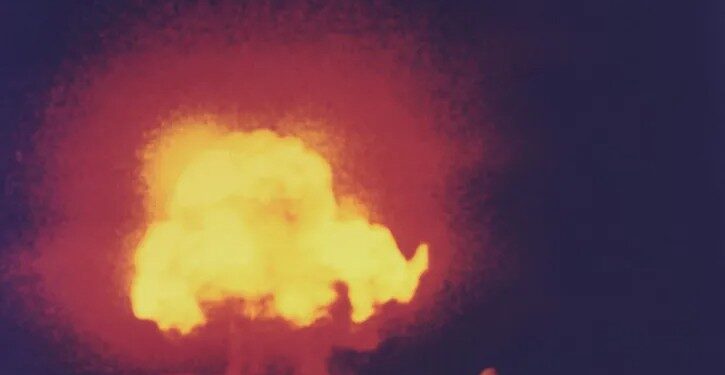On July 16, 1945, at 5:29 AM, the world’s first atomic bomb was detonated near Alamogordo, New Mexico, at a test site known as the Trinity Site. This momentous event was part of the secretive Manhattan Project, a research and development undertaking during World War II that produced the first nuclear weapons. The successful test marked a pivotal moment in history, ushering in the atomic age and significantly altering the course of global politics and warfare.
The Trinity test took place in the Jornada del Muerto desert, a remote area in the southern part of New Mexico. The bomb, nicknamed “The Gadget,” was a plutonium implosion-type device similar in design to the “Fat Man” bomb later dropped on Nagasaki, Japan. The project was led by J. Robert Oppenheimer, who is often referred to as the “father of the atomic bomb.”
As the countdown reached zero, the explosion created an intense flash of light, visible for miles around, followed by a mushroom cloud that rose approximately 40,000 feet into the air. The blast generated the equivalent of about 20 kilotons of TNT, releasing a massive amount of energy and heat that vaporized the surrounding sand into a green, glass-like substance called trinitite. The shockwave from the explosion shattered windows up to 120 miles away and was felt by residents across the region.
Witnesses to the test included a mix of military personnel, scientists, and technicians, all of whom were struck by the overwhelming power of the bomb. Oppenheimer famously recalled a line from the Hindu scripture, the Bhagavad Gita, upon witnessing the explosion: “Now I am become Death, the destroyer of worlds.” This phrase encapsulated the profound and terrifying implications of the new weapon.
The success of the Trinity test confirmed that the United States possessed a powerful new weapon, leading to the bombings of Hiroshima and Nagasaki in August 1945. These bombings resulted in Japan’s surrender and the end of World War II but also demonstrated the devastating effects of nuclear weapons, leading to a complex legacy of destruction and ethical debate.
The Trinity test is commemorated today at the White Sands Missile Range, where the site is designated a National Historic Landmark. It serves as a somber reminder of the dawn of the nuclear age and the profound impact of scientific advancements on humanity. The test not only marked the culmination of years of intensive research and development but also heralded a new era of geopolitical tension and the ongoing challenge of managing nuclear proliferation.
newshub



Recent Comments